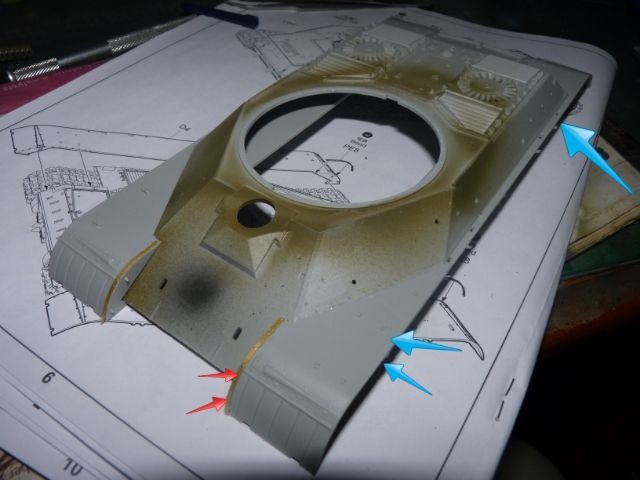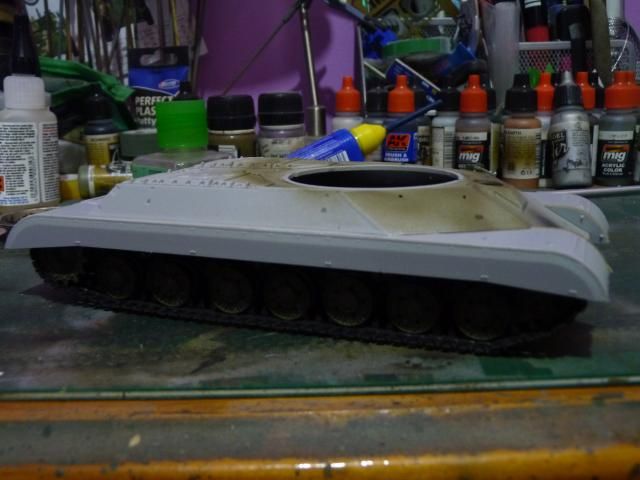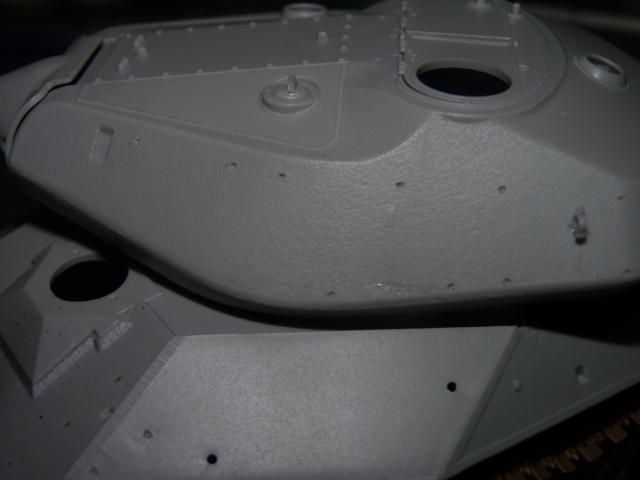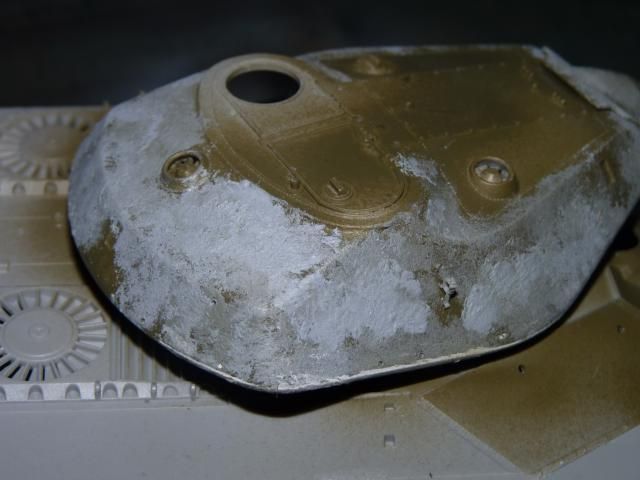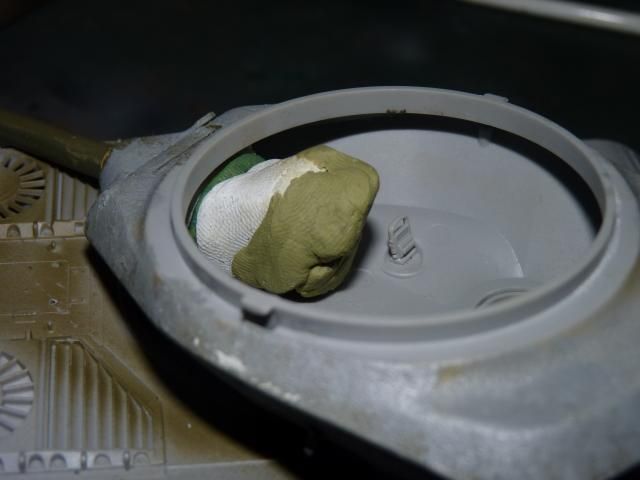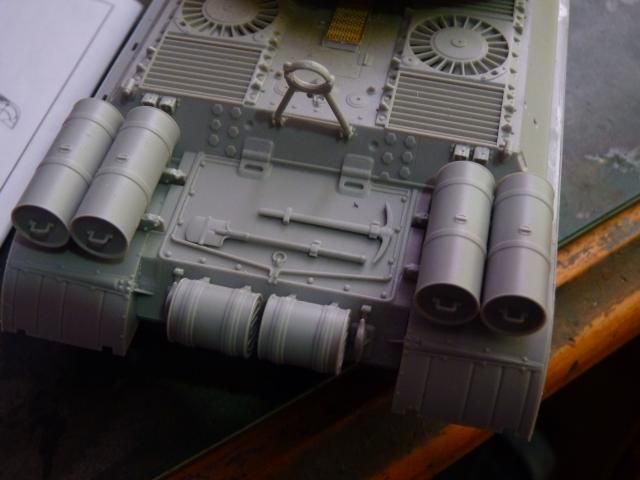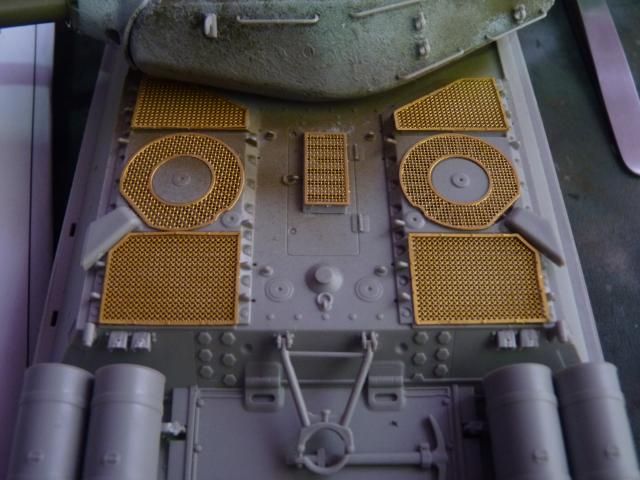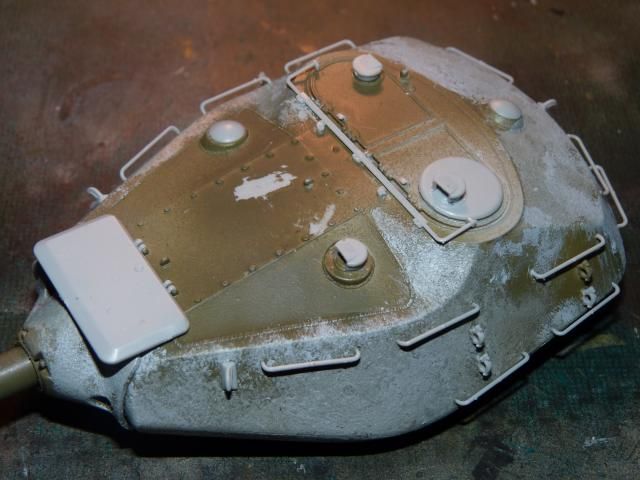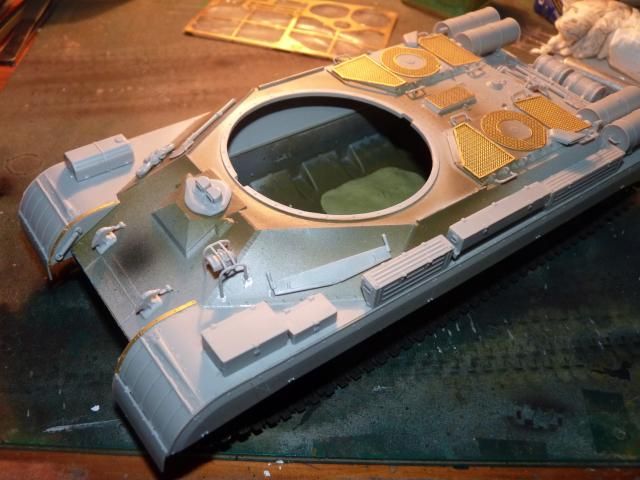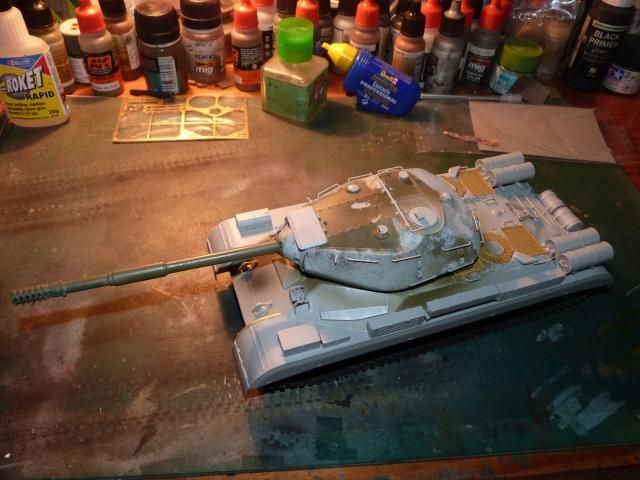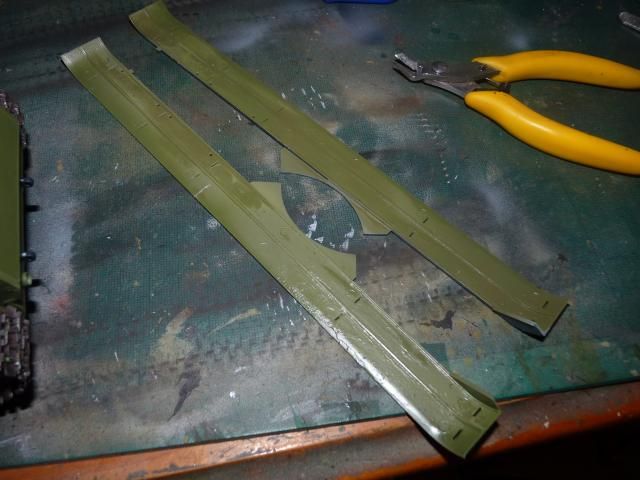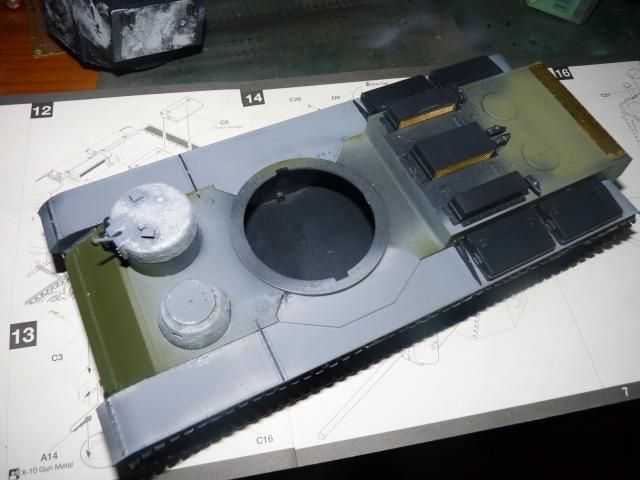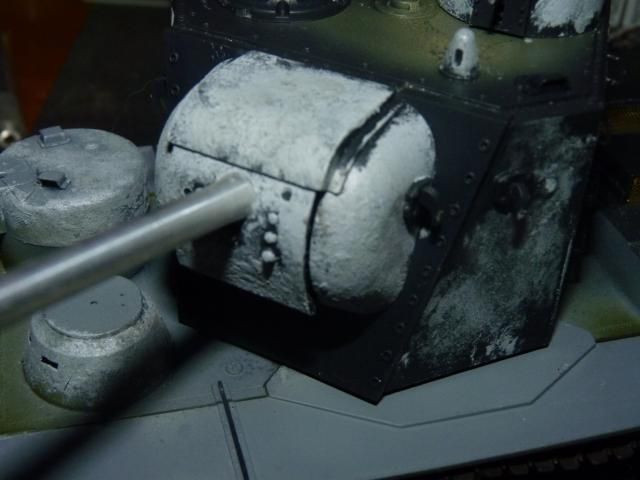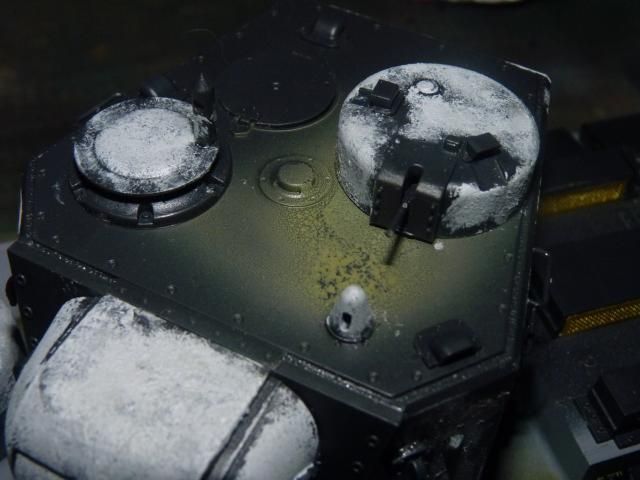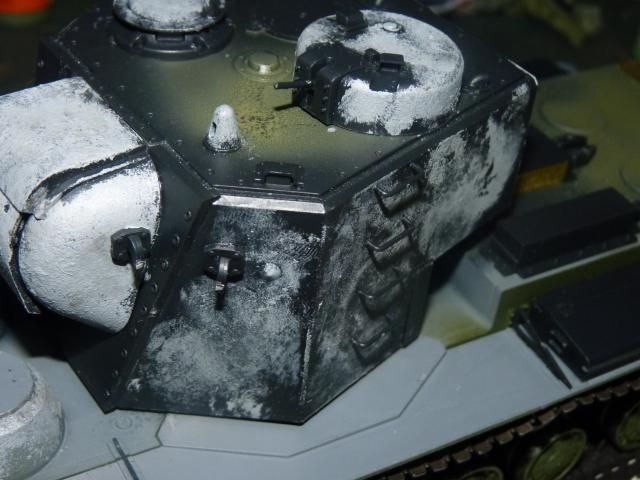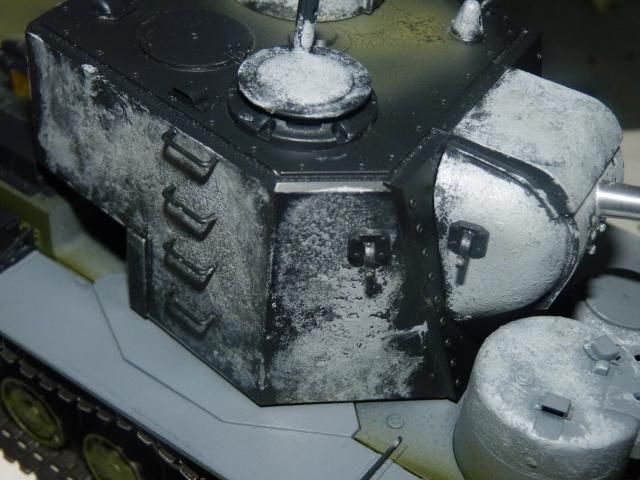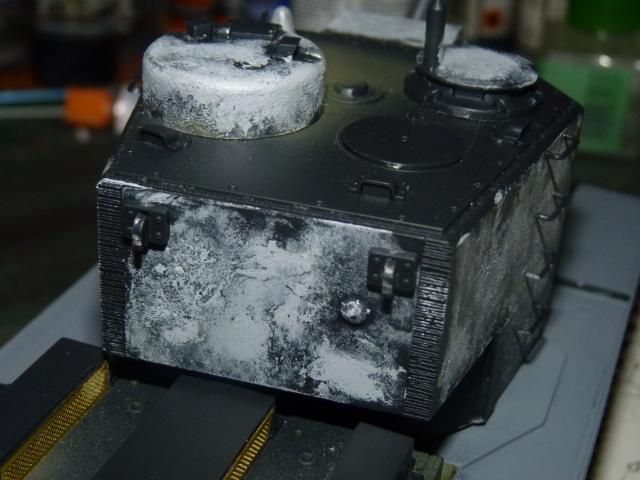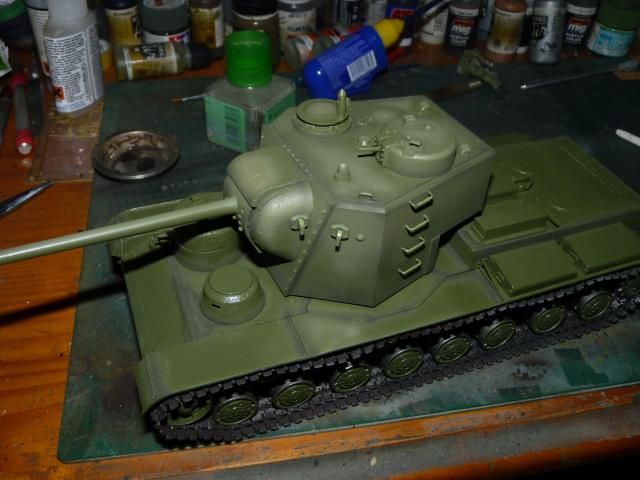Before I write anything, I want to say this disclaimer -
I AM IN NO WAY A MASTER IN WEATHERING. I AM WRITING THIS USING MY OWN OBSERVATION, MY EDUCATIONAL BACKGROUND AND FROM MY OWN EXPERIENCES IN APPLYING WEATHERING. HOWEVER, AS YOU CAN SEE FROM MY COMPLETED WORKS, I AM SURE MY WORDS CAN AND WILL BE JUSTIFIED BY MY WORKS.
Right... let's get on with the topic at hand. Weathering.
What is weathering?
"Weathering" refers to a number of techniques that are intended to make a model appear more realistic by simulating the effects of the elements on the subject. These number of techniques are used to depict a vehicle (or in this case, a mobile suit ) at a certain time or place during the term of its service. It is a form of visualisation of a story or a certain scene in a story. For instance, a vehicle that has passed through a large puddle of muddy water or a mobile suit operating in a tropical climate where wet and dry weather changes instantly and bombarded with dusts and rain.
So what are (some) people doing with their gunpla when it comes to weathering? Well, in a nut-shell, everything i.e. they see something about weathering or read about it and they just applied what they read about and just put applied the whole lot of it. For instance, a gunpla bombarded with dry brushing all over it ( which makes me think of mobile suits bear-hugging each other) or a gunpla with casting textures put all over it ( I graduated with Material Science and for 3 years, I have never heard of easy-to-fabricate parts such as slab or panels being casted )
Fair enough, everybody starts somewhere. I did too but I studied for 3 years (2008 to 2011) before I actually applied any kind of weathering. I will give you an example -
This is my very first kit that I weathered in 2009 ( with that same mind set that I just described)
As you have figured out by now, I just learned about chipping and just applying it everywhere regardless of whether these chips are in logical locations or not.
Compare that with my 2014 builds -
(Click on the picture and you will be linked to the original postings )
That is how long it took me to get to this level. And I'm still a novice.
Weathering is not just putting random rusts or chipping or dry brushing of metallic colour every where. Weathering is supposed to tell a story. A whole story or just a certain point in a story depending on how it is depicted.
A lot of complex thinking is involved in weathering - what is the scenario, what the vehicle/MS has gone through, what it is doing now, etc etc. The best example of a perfectly weathered Gunpal is THIS ( His fan page here - Oishi Model Art ) ( FB album of this kit here - LINK )
Notice the two very large chipping lines across the thighs where the skirts are in contact with the thighs and many other well thought-of weatherings effects. (and the white is inspired from Washable white wash paint used for winter by all 3 armies of WW2 )
Made by Oishi from Thailand, this gunpla is a perfect example weathering done right on a gunpla. ( also, check out Major William, Big Z, Decay and Mr.Gav's works for some really kick-ass weathering finishes on gunpla. Although Mr.Gav's rusted the hell out of his RX-78 which is made from gandanium, it's still a freaking beautifully weathered Grand-daddy. I'm just being too technical and nit-picking here)
I am not going to tell you how or write a tutorial on how to do weathering. I feel I am not skilled enough (yet) to do so. However, If you want to improve or learn about it, I strongly suggest you get your hands on the Weathering Magazines ( Website here - LINK ) ( Their FB page if you wish to enquire - LINK ). Get the books or get the PDFs anyway you can if you want to learn more. I will say this now, internet references can only give you a small amount of informations. Not to mention sources are scattered. You need dedicated books to improve your modelling skills. Trust me on this.
As I stated, I will not be doing any tutorial or what-so-ever nor I will not be doing any spoon feeding but here is some do's and don'ts -

DO'S -
Do look at scale modelling references to learn about weathering.
Do think about a back story .
Do look at real life reference.
Do think about the materials that is involved ( remember, titanium DO NOT RUST and so is the fictional gandanium alloy or do not put steel colour chipping effects on rubber parts or canvas parts)
Do try to consider the current weather your MS is operating in.
Do try to consider the overall climate of the area your MS is operating in.
Do try to think realistically even if gunpla is fictional.
Do try to apply your effects randomly but in logical locations.
Do be resourceful with the necessary tools/product involved ( you can use real dirt and use it to boost the volume of your mud/earth mixture ).
DON'TS -
Don't just rely solely on internet sources. It is not enough.
Don't put on too much. LESS IS MORE. ( My Providence is a prime example of this. I put on too much chipping and it looks stupid )
Don't forget to test out a technique before you apply it.
Don't rush when it comes to weathering.
Don't put the effects all on the same layer.
Don't use the same type of products as your paints ( if you painted with acrylic, weather with oil and enamels and vice versa ).
Don't assume one technique is enough. ( Every weathering process consist of more than three technique - fading, pin wash, chip, collected dust, wet effect, eart, mud etc ).
Don't assume weathering can be done with just one product ( I'm sorry to say this but some people think buying the tamiya weathering master is enough for weathering ).
Well, these are the Dos and Don'ts that I can think of at the top of my head. As much as gunpla is all about MODDING ( and now with GBF, adding on ridiculous amount of stuffs is becoming a trend ), a well weathered gunpla as I have shown can and will be a show stopper. It's only a matter of time before beautifully weathered gunpla start to show on the scene. ( Personally, I'm a little bit tired of seeing straight build painted and modded kits all the time.) Don't hesitate to take the dive and step out of your comfort zone. Remember, the sky's the limit with out beloved hobby.
Happy modelling to you all.





























